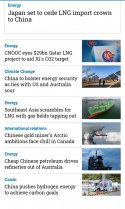You are using an out of date browser. It may not display this or other websites correctly.
You should upgrade or use an alternative browser.
You should upgrade or use an alternative browser.
Chinese Economics Thread
- Thread starter Norfolk
- Start date
Any update on the Xiong'an project?
Part of me wishes they cancelled the project. A Beijing-Langfang-Tianjin corridor just makes more sense, it's the best plan transport-wise and connects directly to a megaport.
I think this is a major failed idea. All the countries which have these purpose built cities for the seat of government, like the US, Australia, Brazil, etc these cities are a major failure, they are a huge money hole with artificial economies which need to be propped up leeching resources from the rest of the country. Putting the capital in one of the largest cities available just plain makes sense.
I agree that they would have been better off increasing the links and rate of urbanization in the northern cities close to Beijing and Beijing itself.
In the short term this might cause disruptions but in the long term the unified natural gas network will enable shifting gas between Chinese regions more easily. This will further increase the rate of adoption on natural gas. This is important to drive down pollution in urban areas.
Is it the algorithm or what?
Most of the news about China and energy seem very bullish - from Nikkei nonetheless.
The Japanese are world's largest importer of LNG. After they shut the nuclear reactors down their economy is highly dependent on the import of fossil fuels. For example the world's largest nuclear power generating site in the world is in Japan and it is currently shut down. That is likely why Nikkei focus this much on LNG news from China.
Any update on the Xiong'an project?
Part of me wishes they cancelled the project. A Beijing-Langfang-Tianjin corridor just makes more sense, it's the best plan transport-wise and connects directly to a megaport.
There already is a Beijing-Langfang-Tianjin corridor. The high speed rail has been operating since 2008, and the distance is only 100km. I expect it is largely filled up by now
What I mean is a Beijing-Langfang-Tianjin economic corridor.There already is a Beijing-Langfang-Tianjin corridor. The high speed rail has been operating since 2008, and the distance is only 100km. I expect it is largely filled up by now
If I'm not wrong Xi plans to move non-essential SOEs to Xiong'an to relieve congestion in Beijing.
What I mean would be moving the SOEs to somewhere in the corridor instead, forming a chain of cities like the US eastern seaboard
Last edited:
What I mean is a Beijing-Langfang-Tianjin economic corridor.
If I'm not wrong Xi plans to move non-essential SOEs to Xiong'an to relieve congestion in Beijing.
What I mean would be moving the SOEs to somewhere in the corridor instead, forming a chain of cities like the US eastern seaboard
But the land around the trains station on the Beijing-Langfang-Tianjin corridor is already congested and developed?
Xiong'an looks like it will be on the future Beijing-Shenzhen high speed railway line.
Chains of dense Chinese cities should follow the railway lines
Last edited:
The centre of Xiong'an is closer to Baoding (~50km) than either Beijing (~100 km) or Tianjin (~100km). Beijing to Tianjin is also roughly 100km. The new development forms more of a triangle than a corridor.But the land around the trains station on the Beijing-Langfang-Tianjin corridor is already congested and developed?
Xiong'an looks like it will be on the future Beijing-Shenzhen high speed railway line.
Chains of dense Chinese cities should follow the railway lines
If we look at populations:
Beijing: ~21,893,095 total with ~21,450,000 urban
Tianjin: ~13,866,009 total with ~10,932,000 urban
Baoding Prefectural City: ~11,690,500 total with ~2,020,000 urban
Xiong'an being located in Baoding prefecture is interesting since it has the potential to integrate Baoding with Beijing and Tianjin. Furthermore there's plenty of urbanization still possible in the prefecture. Hebei's urbanization rate was 55.01% in 2017.
I think most of the really big tech companies in China are founded and "manage" daily by Chinese but are actually majority owned by foreign funds. I would not be surprise that the gov is a bit nervous that these companies are monopolizing the market and want more real local champions.
I think this is a major failed idea. All the countries which have these purpose built cities for the seat of government, like the US, Australia, Brazil, etc these cities are a major failure, they are a huge money hole with artificial economies which need to be propped up leeching resources from the rest of the country. Putting the capital in one of the largest cities available just plain makes sense.
I agree that they would have been better off increasing the links and rate of urbanization in the northern cities close to Beijing and Beijing itself.
Central government functions by definition, take up resources from the rest of the country.
But do you really want them located in a congested and expensive city like Beijing, subject to powerful local interests?
If you had to start from scratch, you would want to locate the capital in the centre of the country, as defined by the shortest travel time for the entire population. And with enough empty land to work with.
So you would end up somewhere around Hubei.

